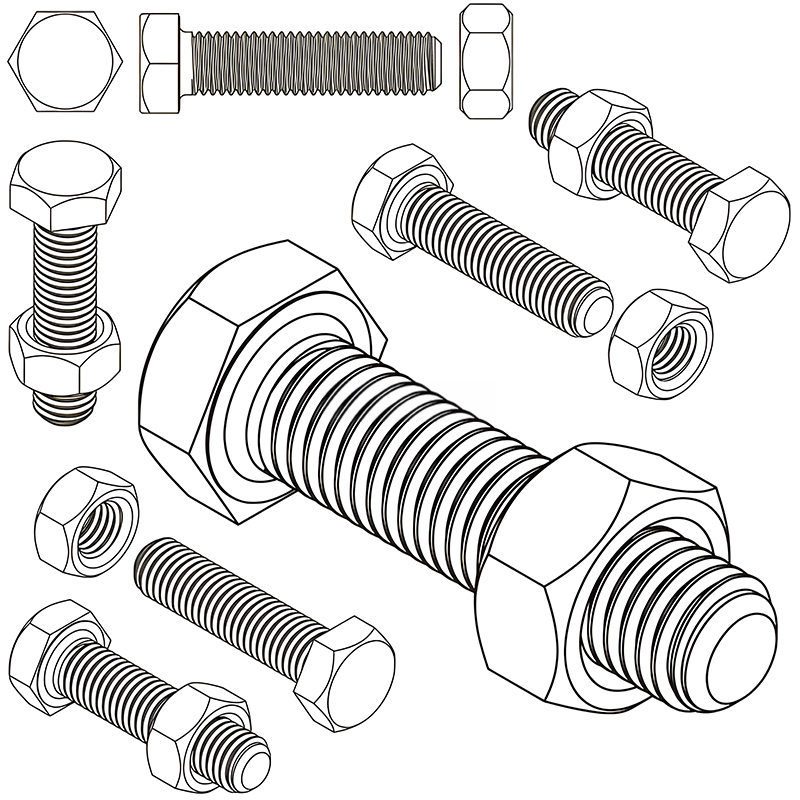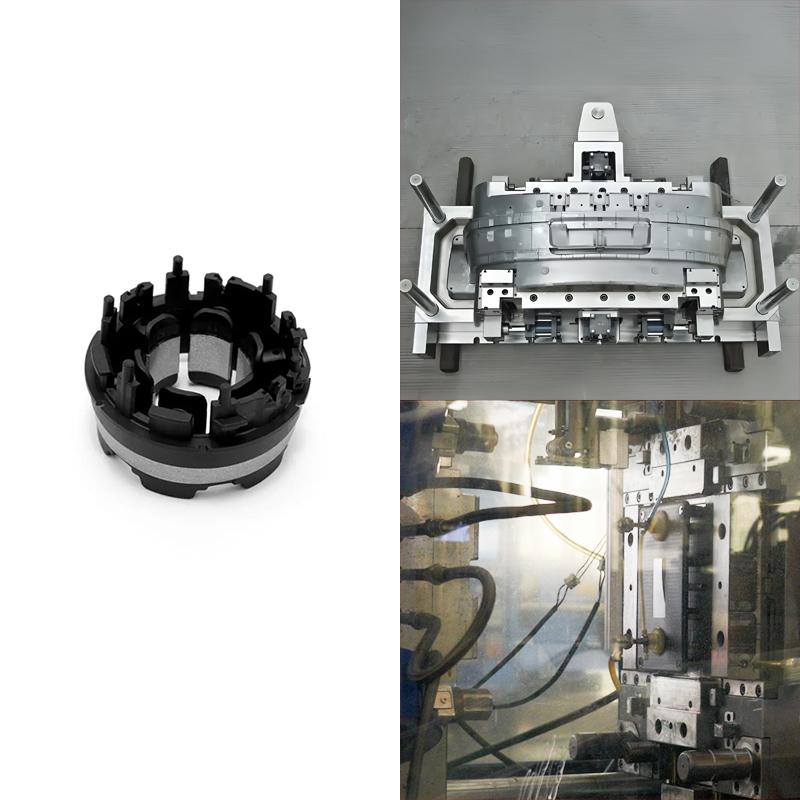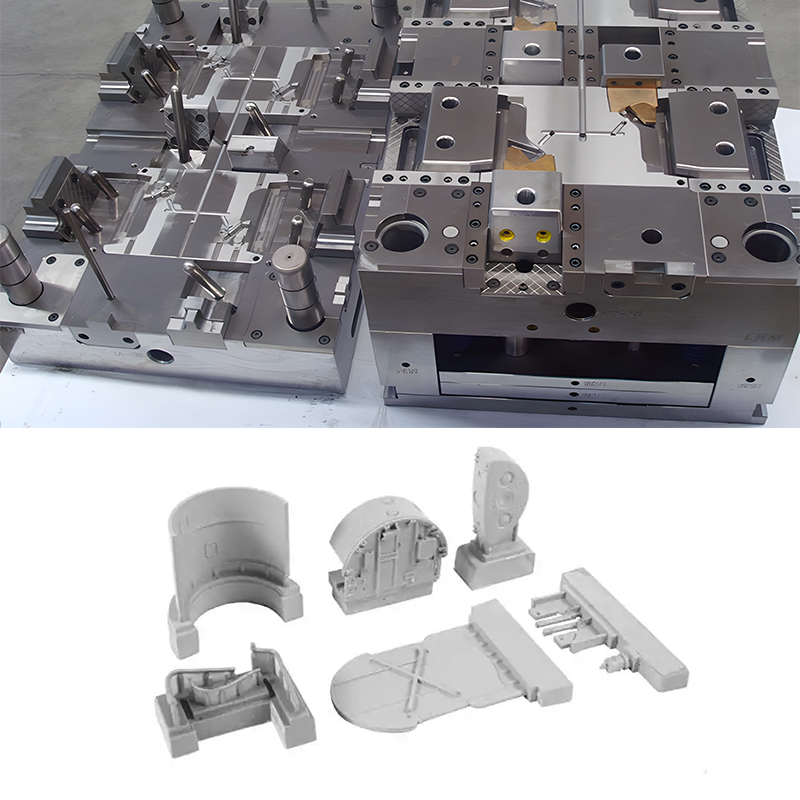Fasteners are common components widely used in daily life. Today, we will provide a detailed introduction to the classifications, selections, and fastening processes. This guide is packed with useful information and is worth keeping.
Definition of Fasteners
Fasteners, also known as standard parts in the market, are a class of mechanical components used to securely connect two or more parts (or components) into a single entity.
Screws are a colloquial term for fasteners, but they are just one type of fastener.

The differences between various fasteners lie in their shapes, sizes, and materials, allowing them to meet different application needs. The primary function of fasteners is to create a mechanical connection that maintains the position and integrity of components.
For example, they can connect two or more parts or fix components to a structure or surface. Fasteners are characterized by their variety, high degree of standardization, serialization, and generalization. In engineering and manufacturing, fasteners are indispensable for building everything from simple furniture to complex machinery, electronic devices, and ships.
Types of Fasteners
1. Bolts
Composed of a head and a screw (a cylindrical body with external threads), bolts are used with nuts to secure two parts with through holes. This type of connection is called a bolt connection. Removing the nut from the bolt can separate the two parts, making bolt connections removable.


2. Studs
A type of fastener without a head, with external threads on both ends. One end must be screwed into a part with an internal thread hole, while the other end passes through a part with a through hole and is then fastened with a nut, creating a removable connection called a stud connection. Studs are mainly used where the connected part’s thickness is large, requiring a compact structure, or where frequent disassembly is needed, making bolt connections unsuitable.

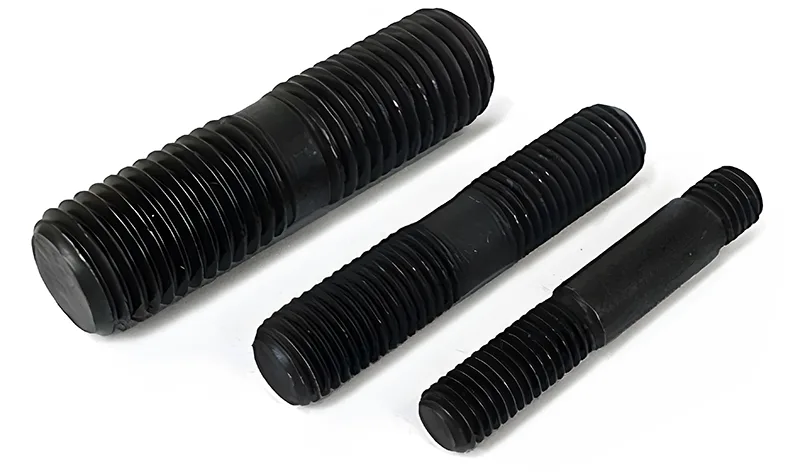
3. Screws
These fasteners also consist of a head and a screw. Based on their use, they can be divided into three categories: machine screws, set screws, and screws for special purposes. Machine screws are used for fastening parts with internal threads to parts with through holes, without the need for nuts (this is called a screw connection and is also removable). Set screws are used to fix the relative position of two parts. Special-purpose screws, such as eye bolts, are used for lifting parts.

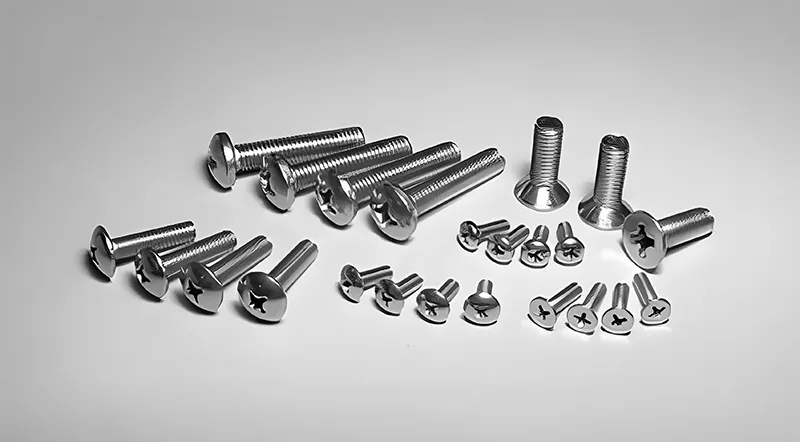
4. Nuts
Nuts have internal threaded holes and are generally hexagonal in shape, though they can also be square or cylindrical. They are used with bolts, studs, or machine screws to securely connect two parts together, making them a single entity.

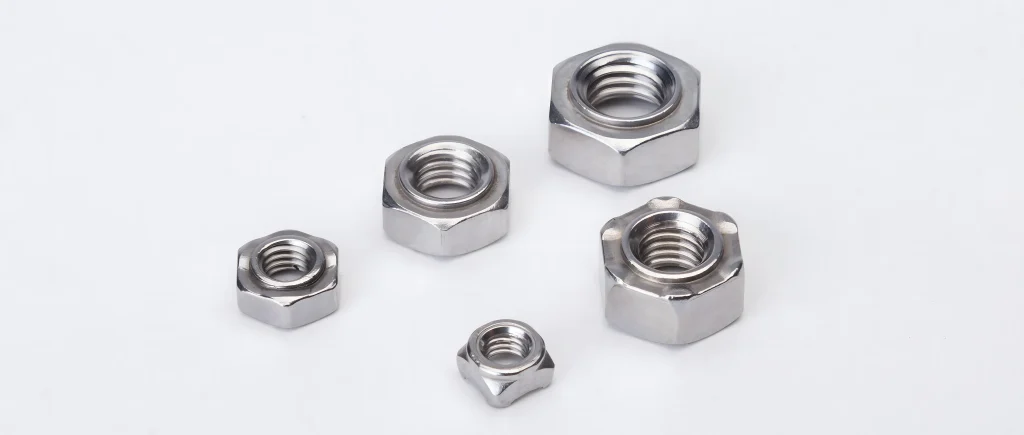
5. Self-tapping Screws
Similar to machine screws, but with threads specifically designed for self-tapping. They are used to fasten two thin metal parts together, making them a single entity. The parts need to have pre-drilled holes, and due to the high hardness of these screws, they can be directly screwed into the parts, forming internal threads. This type of connection is also removable.

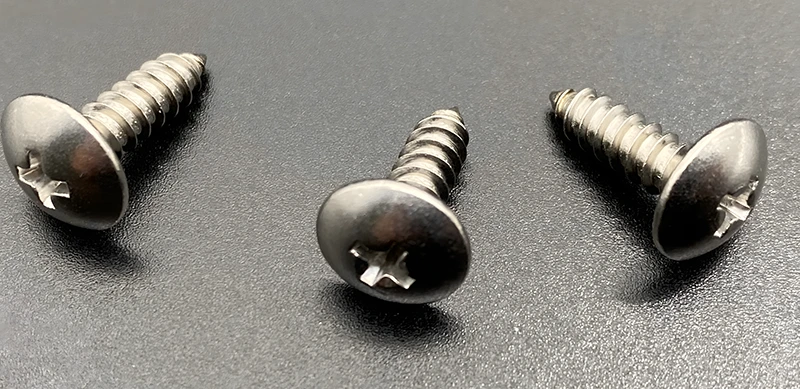
6. Wood Screws
Similar to machine screws but with threads designed for wood. They can be directly screwed into wooden parts (or components) to fasten a metal (or non-metal) part with a through hole to a wooden component. This type of connection is also removable.


7. Washers
Flat, circular fasteners are placed between the bearing surface of a bolt, screw, or nut and the connected part’s surface. They increase the contact surface area, reduce pressure per unit area, and protect the connected part’s surface from damage. Elastic washers can also prevent nuts from loosening.
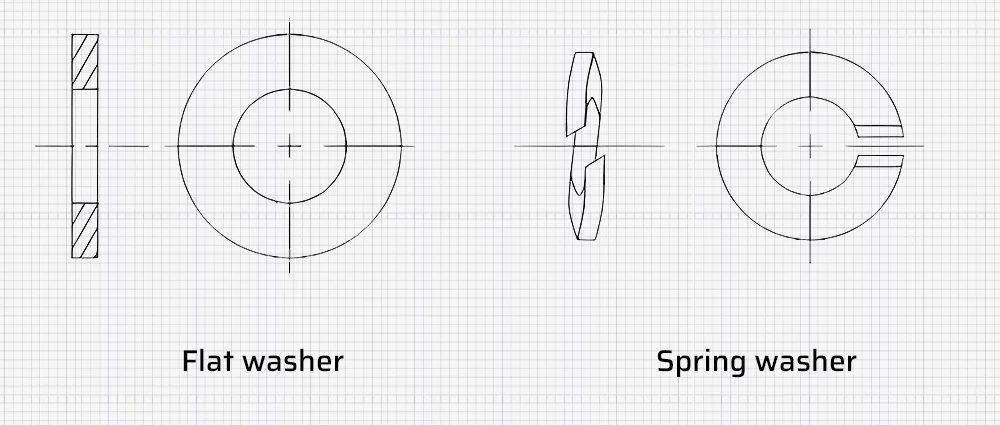
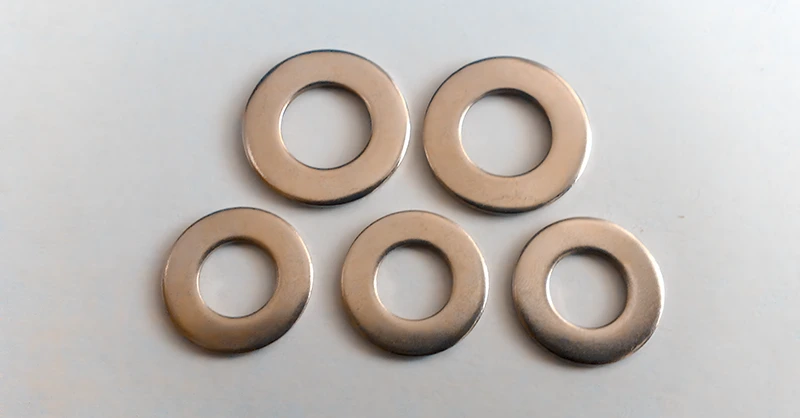
8. Retaining Rings
Used in the grooves of shafts or holes to prevent parts on shafts or in holes from moving laterally.

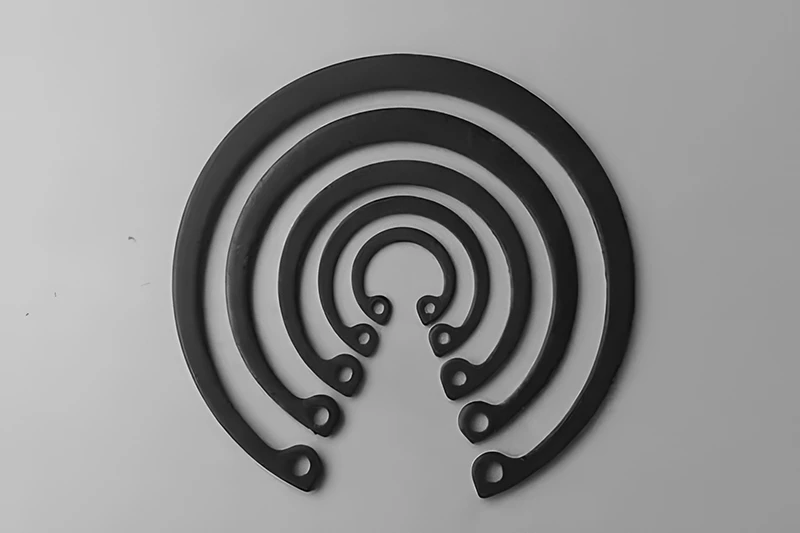
9. Pins
Mainly used for part positioning, some can also connect parts, fix parts, transmit power, or lock other fasteners.

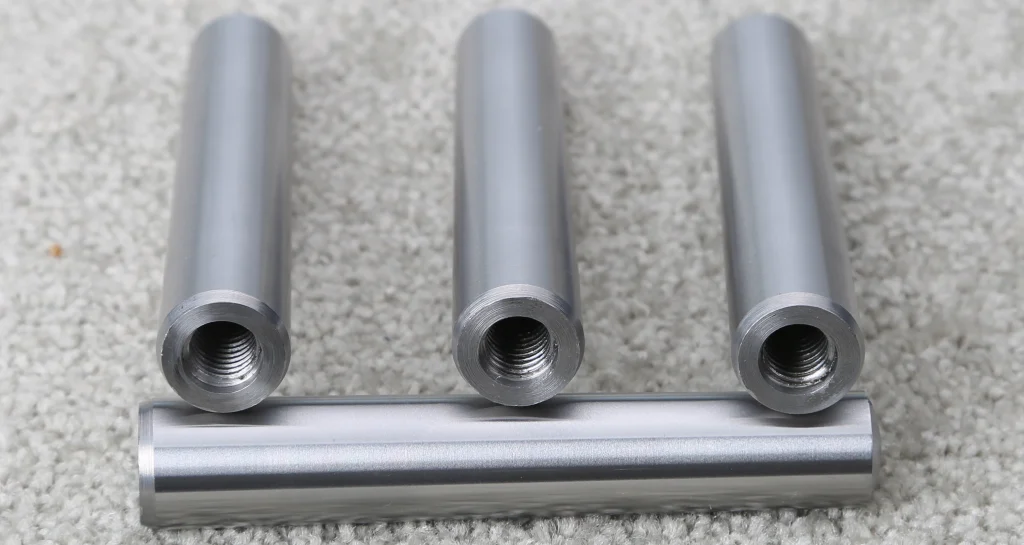
10. Rivets
Consisting of a head and a shank, rivets are used to fasten two parts with through holes, making them a single entity. This type of connection is called riveting, and it is non-removable. To separate the connected parts, the rivet must be destroyed.

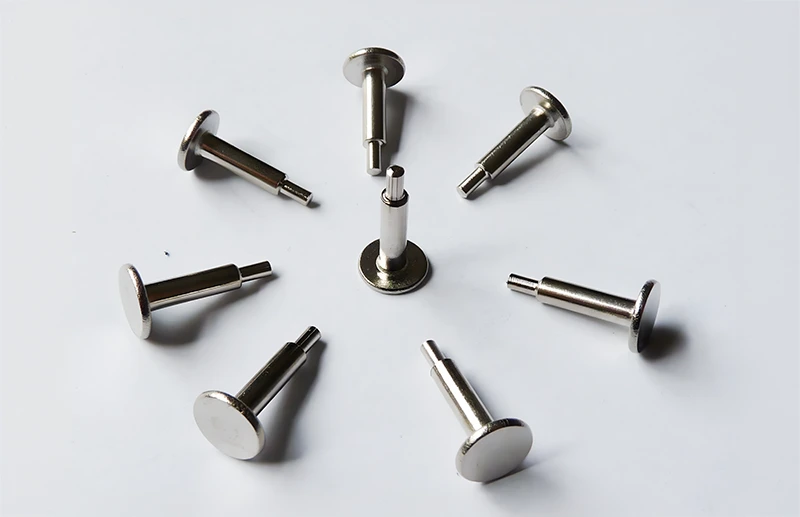
11. Assemblies and Connection Sets
Assemblies refer to a type of fastener supplied in combination, such as a machine screw (or bolt, self-tapping screw) combined with a flat washer (or spring washer, lock washer). Connection sets refer to specific combinations of bolts, nuts, and washers supplied together, such as high-strength hexagon head bolt connection sets for steel structures.

Application Characteristics of Different Types of Screws:
From the variety of screws available, we can summarize their application characteristics as follows:
a. Bolts, Screws, and Studs with Nuts or Threaded Holes: These are primarily used for high-strength connections that bear significant loads. They have simple and stable structures.
b. Self-tapping Screws with Pre-drilled Holes: These are generally used to fix lightweight objects, such as automotive interiors and small electrical parts, onto metal sheets.
c. Plastic Fasteners like Clips and Clamps: These are typically used to secure wiring harnesses and small-diameter pipes into sheet metal.
d. Hose Clamps and Ring Clamps: These are often used in low-pressure hydraulic systems, pneumatic systems, cooling pipelines, etc.
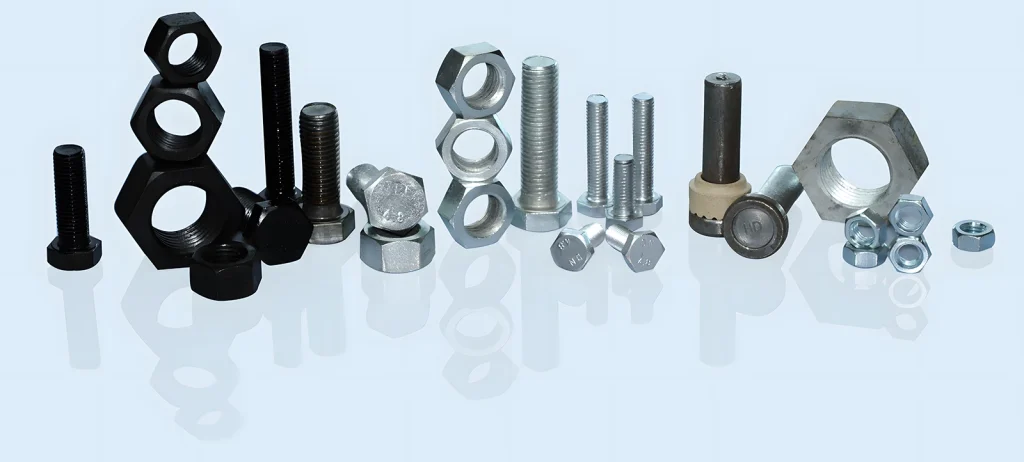
Selection of Fasteners
When choosing suitable fasteners from the fastener inventory, consider not only fastening performance but also ease of assembly, ease of after-sales maintenance, aesthetic requirements, and cost efficiency.
1. Determine Specifications and Performance Grades
Each bolt’s strength and friction coefficient are clearly defined. The preload it can provide varies according to different torque strategies, but the minimum preload can be determined for a given torque strategy.
After determining the minimum preload required for the connection point, compare which bolt specifications can provide at least this minimum preload and choose the most economical specifications and performance grades.
The general steps are as follows:
a. Determine the type of connection: is it bearing tensile load, shear load, or a combination?
b. Determine the working load of the connection set based on the type of connection.
c. Calculate the axial and shear loads on the bolt.
d. Determine the minimum clamping force.
e. Verify the surface pressure on the clamped parts to prevent crushing.
f. Determine the appropriate specifications and performance grades.
2. Selection of Head Types
Fastener head shapes vary to accommodate different assembly spaces, tightening levels, and connection appearance requirements. The main functions of the head are bearing and turning, and the selection should consider these factors.
| Head Type Diagram | Name | Usage Notes |
|---|---|---|
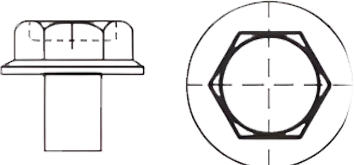 | Hex Flange | High-strength bolts should preferably use hex flange heads, which reduce the risk of crushing the clamped parts compared to hex head bolts. |
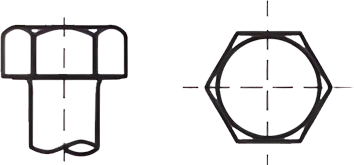 | Hex Head | Not recommended, generally used with spring washers and flat washers. |
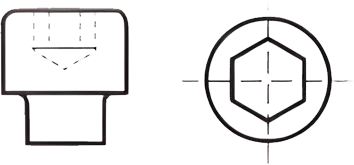 | Hex Socket Head | Selected only for high-strength bolts/screws with limited wrenching space. |
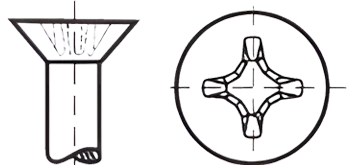 | Countersunk | Mainly used in positions requiring flatness after fastening, such as fixing lock fasteners on sliding doors. Countersunk hole dimensions must strictly comply with national standards. |
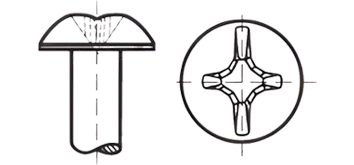 | Pan Head | Mainly used for flat bearing surfaces that do not require countersunk heads, and is more economical compared to countersunk heads. |
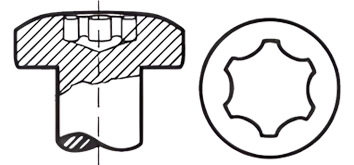 | Torx | Preferably used over Phillips heads for internal wrenching, as they are less likely to slip and can withstand greater torque. |
3. Selection of Surface Treatment
a. The principle for selecting fastener color is to match it with the clamped parts. For non-visible parts, prioritize using silver color.
b. Depending on the parts used, different rust-proof grades can be adopted.
c. For mechanical performance grades above 8.8, it is not recommended to use zinc plating and passivation for surface treatment. Generally, non-electrolytic zinc flake coatings are recommended. For spring washers and other fasteners with hardness above 350HV, avoid using zinc plating and passivation to prevent hydrogen embrittlement failure.
4. Selection of Grade Compatibility
Generally, the mechanical performance grades of nuts should match those of bolts, studs, or screws as follows:
a. Grade 8 nuts can match with 8.8-grade bolts, studs, or screws.
b. Grade 10 nuts can match with 10.9-grade bolts, studs, or screws.
c. Grade 12 nuts can match with 12.9-grade bolts, studs, or screws.
Generally, higher-performance grade nuts can replace lower-grade nuts. For example, grade 10 nuts can replace grade 8 nuts to match with 8.8-grade bolts, studs, or screws.
5. Selection of Fastening Processes
Before choosing a fastening process, designers must determine if the product requires disassembly and maintenance. For example, products like fire detectors, TV remote controls, and portable information terminals must allow consumers to disassemble them to replace batteries. Conversely, products like hair dryers and disposable medical devices generally do not need to be designed for disassembly or maintenance. Additionally, some designers may specifically design components to be tamper-resistant, preventing consumers from easily disassembling the products (e.g., electronic products).
Products Requiring Removable Maintenance
Screws, bolts, and snap-fit joints (i.e., plastic clips) are the most commonly used fastening methods in products requiring removable maintenance. Bolts and screws provide clamping loads, compressing components into the assembly. When the torque of bolts/screws exceeds the point of contact between the head and the mating parts, the fastening requirement is met. Compared to snap-fit joints, bolts and screws offer better retention, while snap-fit joints rely more on the strength of the plastic components themselves.
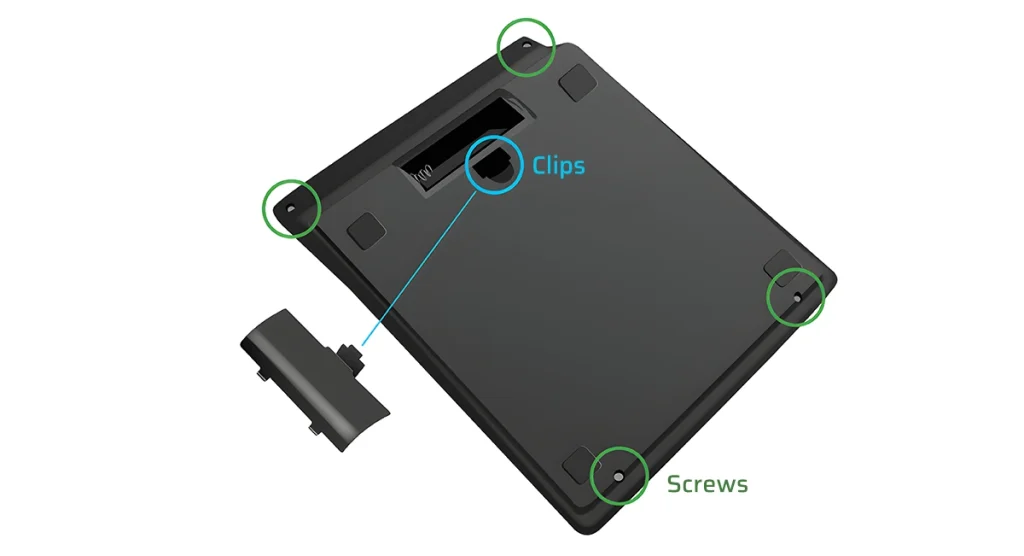
Snap-fit joints provide retention by interlocking multiple components. Snap-fit joints allow for quick assembly and simplify the overall assembly process due to fewer parts in the bill of materials. If minimal retention is required in plastic products, snap-fit joints are typically preferred. As shown in the picture above, most pocket calculators use snap-fit joints on the battery cover to facilitate battery replacement by consumers.
Permanent Products
Solid pins, adhesives, screws, bolts, and snap-fit joints are common methods for permanently fixing components. Although designers often do not specifically require new products to adopt removable maintenance designs, many products still use removable fasteners like screws to familiarize the operators with their use. As shown in the picture above, most pocket calculators use screws to connect the plastic housings, even though consumers do not need to disassemble the components during the product’s lifespan.
Solid pins and adhesives are the preferred fastening methods for permanent components because they provide excellent retention for plastic materials. Adhesives bond multiple components together, providing retention, while solid pins cause the base material to deform, creating interference and providing retention. Note that solid pins with retention features (e.g., knurling, barbs) are better than plain pins because they allow for larger hole tolerances and reduce stress on plastic components. Tamper resistance helps reduce warranty, product damage, or environmental exposure (e.g., moisture, particles) risks.
Additionally, removable maintenance fasteners (e.g., screws) pose significant safety hazards (choking risks) in products like children’s toys. For non-removable maintenance items, solid pins and adhesives are usually the preferred fastening methods.
Solid Pins
Solid pins can be easily installed using a press, whether manual or fully automatic. During installation, the press applies linear force to drive the pins until they reach a predetermined stop distance. For components with multiple pinholes, a platen press can be used to install multiple solid pins simultaneously. Therefore, the assembly cycle for solid pins is faster than for screws or bolts. Solid pins have the lowest failure rate compared to other fastening methods when components are fixed and oriented correctly. The equipment used to install solid pins requires minimal maintenance.
For aesthetic reasons, some solid pins are hidden in the final assembly.
Adhesives
Adhesives can be applied using manual guns or automated dispensing equipment. Typically, surface preparation of the base components is required. The adhesive application process during assembly is quite complex and requires skilled operators. Applying too little or too much adhesive to a single component can cause field failures. Additionally, many adhesives require temperature control, pressure control, and/or mixing with different fluids before contact with the base components. After application, adhesives undergo a curing process that can take over 24 hours in some cases!
Adhesive dispensing equipment requires extensive maintenance and monitoring because adhesives can be problematic. Contaminants can cause equipment blockage, and many adhesives have limited shelf lives. These factors increase the cost and complexity of the assembly process and reduce machine availability. Due to numerous variables, the biggest challenge may be repeatability and control.
Screws
After screws are inserted into the host components, they can be installed using handheld torque screwdrivers or fixed automatic screwdrivers. Both types of screwdrivers will rotate the screws to the specified torque value. It’s important to realize that this process is much more complex than installing solid pins. Manufacturers may encounter issues when aligning screws to the driving bit and securing the screws in place. If screws are not fully aligned, they may strip the host plastic, resulting in component scrap. Another common issue when installing screws directly into plastic is that the screws may loosen over time due to plastic creep or stress relaxation. Although screws are inexpensive, readily available, and familiar to operators, they present challenges during assembly.
Bolts
Bolts function similarly to screws, except they are threaded into nuts or metal inserts rather than plastic hosts. Of the fastening methods discussed here, bolts provide the highest retention. When used with nuts or threaded inserts, bolts allow for unlimited assembly and disassembly without damaging the plastic. Proper bolt connections in plastic components require three separate parts: the bolt, a limiting sleeve, and a nut or threaded insert. This increases the bill of materials and the complexity and cost of the assembly process. Unless alternative fastening methods cannot achieve the required clamping load, bolt connections should be avoided.
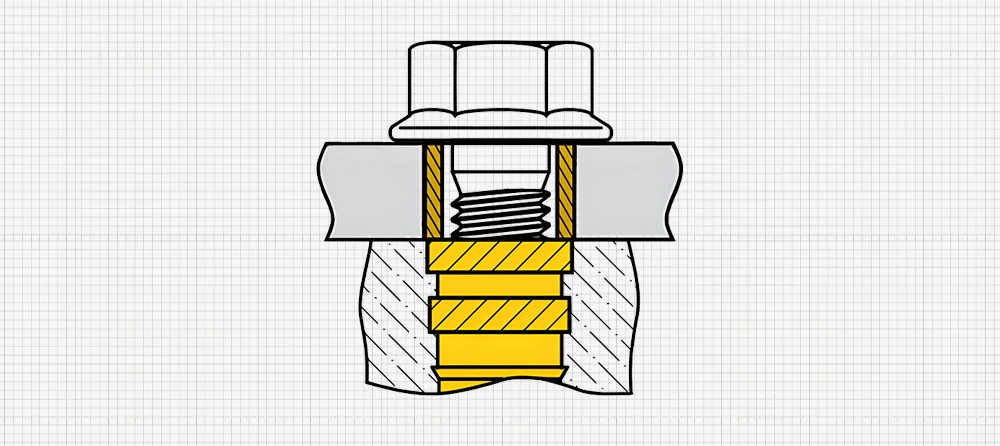
Snap-fit Joints
Snap-fit joints are typically assembled manually by pressing the components together. The assembly process can vary significantly based on the design of the interlocking components. Some snap-fit joints are designed for removable maintenance, while others are permanent. By using snap-fit joints, manufacturers can minimize the total number of parts used in each assembly. This approach ultimately reduces costs, inventory, and handling difficulties. However, compared to other fastening methods, snap-fit joints offer the lowest retention because they rely on the strength of the plastic components themselves. Snap-fit joints are preferred for components subjected to minimal load environments. However, snap-fit joints are prone to failure and can pose environmental hazards, such as choking risks.
When designing plastic housings, designers must consider performance, simplicity, fastener cost, and assembly cost. It is recommended that design engineers collaborate with manufacturing engineers early in the design phase to consider the entire assembly process. In most cases, the final new product design does not consider the assembly cycle, scrap rate, maintenance cost, and consumer behavior throughout the product’s lifespan.
Conclusion
As key industrial components that connect different parts, the importance of fasteners in industrial production cannot be underestimated. If fasteners fail or loosen, it can lead to machine or equipment failures, resulting in downtime, production delays, losses, and safety hazards. Therefore, using high-quality, reliable fasteners and correct fastening methods in industrial production is crucial.
